There are a few essential needs for every Butterfly Garden. First there must be food for the caterpillars, plants that produce nectar for the butterflies, and shelter.
One of the most important things, is to limit the use of pesticides on your property. A little leaf damage from native caterpillars is what you want. It’s not the native’s that usually cause problems like defoliation, it is exotic pests that don’t have natural predators here, such as the Gypsy Moth.
Once these essential items are present, you will be sure to see many more of your winged friends.
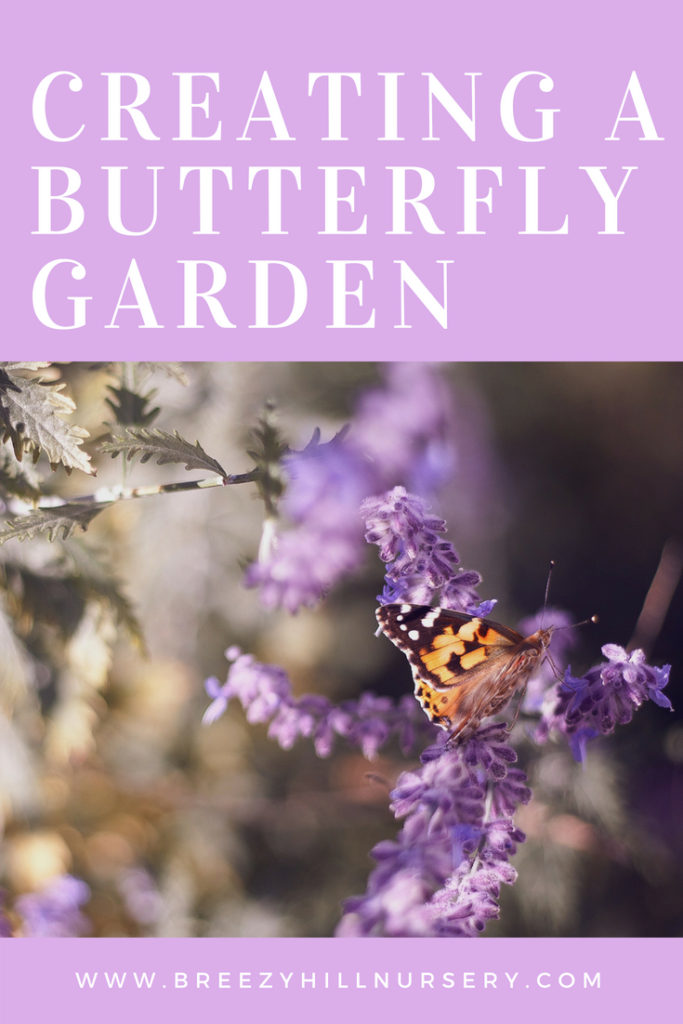
Plants That are Fed on By Caterpillars:
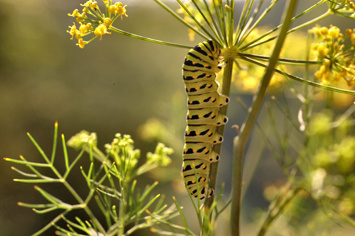
Different types of butterflies feed on different types of plants as caterpillars. The best way to feed all different types of caterpillars is to keep native vegetation in your garden.
Not only native perennials and shrubs, but even trees support caterpillars.
In fact if you include moths with caterpillars, Oak trees support the most variety of caterpillars of any native plant with over 500 different species that feed on them.
These are not just moths either, they include such beauties as the Red-Spotted Purple butterfly.
![By Virginia State Parks staff (RED-SPOTTED PURPLE 1 Uploaded by AlbertHerring) [CC BY 2.0 (http://creativecommons.org/licenses/by/2.0)], via Wikimedia Commons](https://www.breezyhillnursery.com/wp-content/uploads/2016/01/RED-SPOTTED_PURPLE_1_5853892078-Wikimedia.jpg)
By Virginia State Parks staff (RED-SPOTTED PURPLE 1Uploaded by AlbertHerring) [CC BY 2.0], via Wikimedia Commons
Shrubs that support native caterpillars include Viburnum, Dogwood, and Spicebush .
Perennials for butterfly caterpillars include: Goldenrods, Asters, Joe Pye, Boneset, Geraniums, Black Eye Susans, Phlox, Bee Balm, Veronica, and Milkweeds off course and not just the Common, but also the more ornamental Red milkweed and Butterfly weed.
Even native grasses, such as Prairie Dropseed and Little Bluestem support several species of skippers and the Common Wood Nymph.
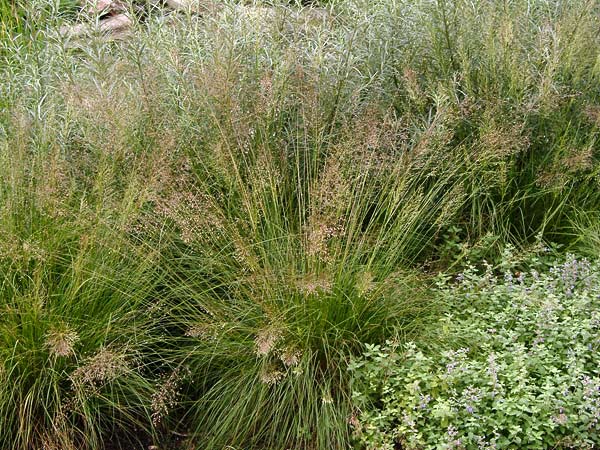
Most people aren’t thinking of butterflies when they plant the highly ornamental Prairie Dropseed, but it can attract butterflies to your yard.

Plants that Produce Nectar to Feed Butterflies:
When people think of plants to attract butterflies they are usually thinking of the flowering plants that feed butterflies nectar.
It is important to have a variety of plants that bloom at different times to feed butterflies throughout the season. Late summer and early fall is particularly important to have a lot of blooms because that is when most butterflies are out and feeding.
Butterflies are attracted to color, so planting groups of plants together with similar bloom times and colors will attract more butterflies then a single plant. It also looks better!
Below is a list of popular nectar producing plants that can work well in your landscape.
ANNUALS:
- Cosmos,
- Lantana,
- Marigold,
- Petunia,
- Zinnias.
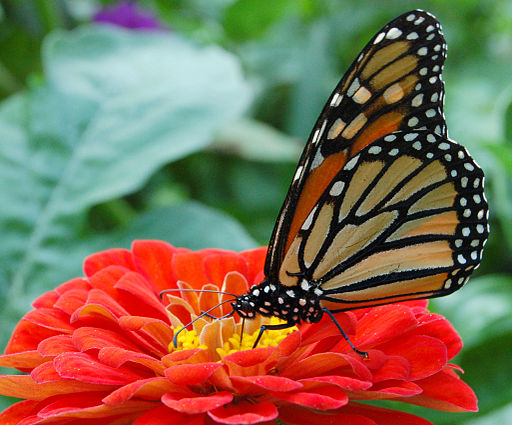
By Photo (c)2006 Derek Ramsey (Ram-Man) (Own work (Own Picture)) [GFDL 1.2], via Wikimedia Commons
PERENNIALS:
- Butterflyweed,
- Joe-pye Weed,
- Mountain Mints,
- New England Aster,
- Purple Coneflower,
- Liatris (Blazing star),
- Goldenrods (Pick a variety better suited to the garden instead of the weedy Canada Goldenrod),
- Swamp Milkweed,
- Bergamot (Monarda),
- Coreopsis,
- Salvia, and
- Autumn Joy Sedum.
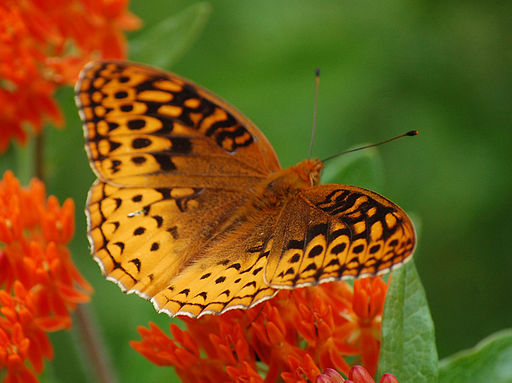
Great Spangled Fritillary on Butterfly Weed flowers.
By Wayne National Forest [CC BY 2.0], via Wikimedia Commons

Comments are closed.